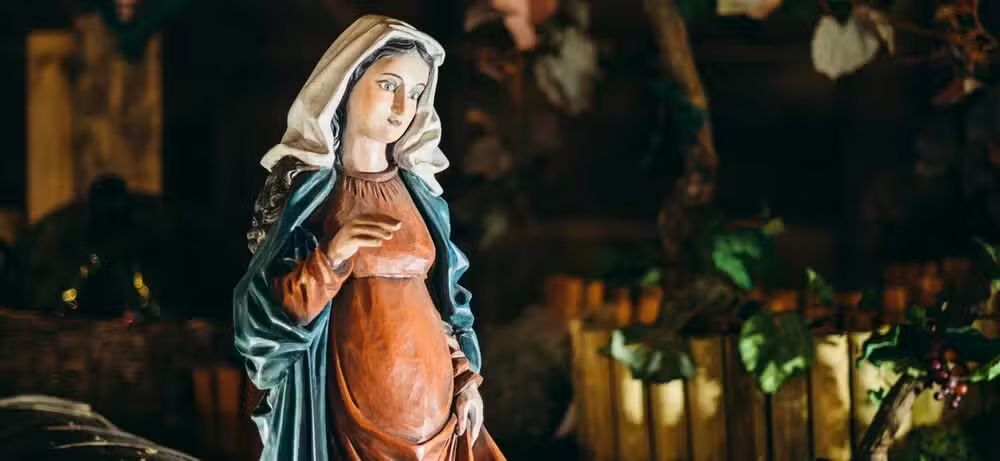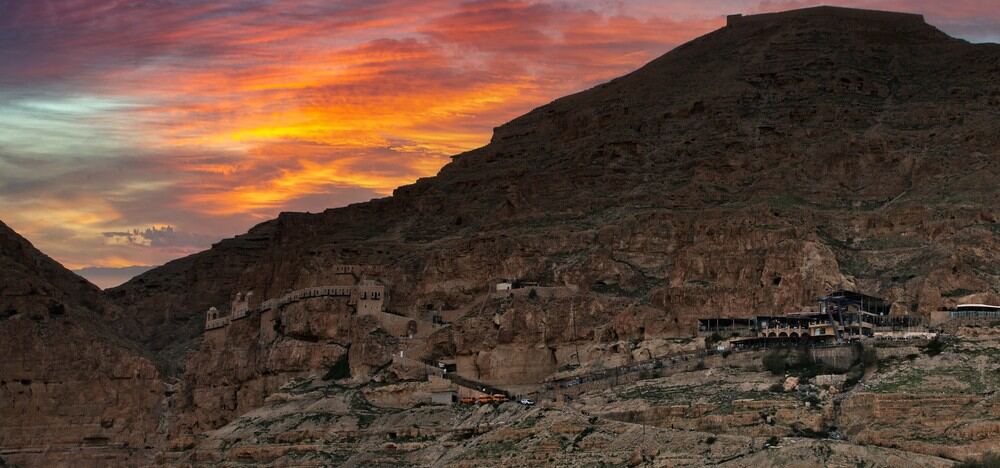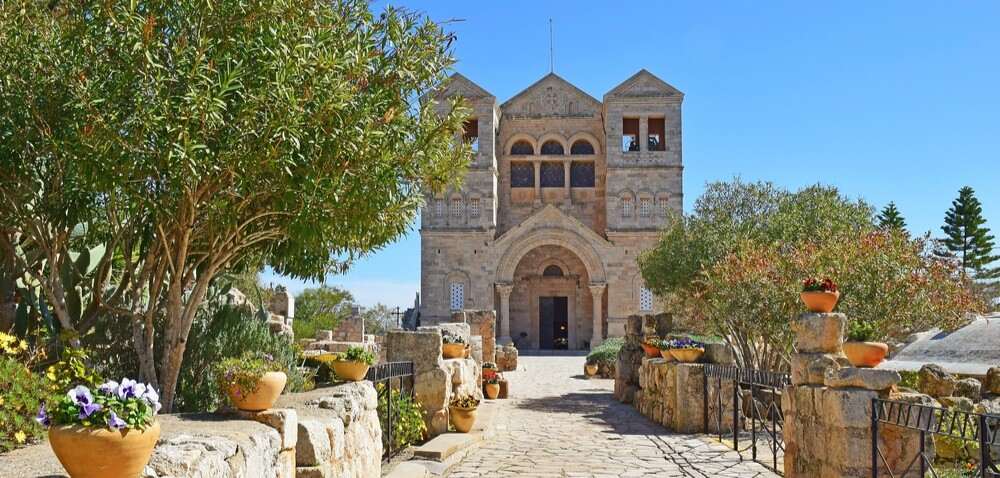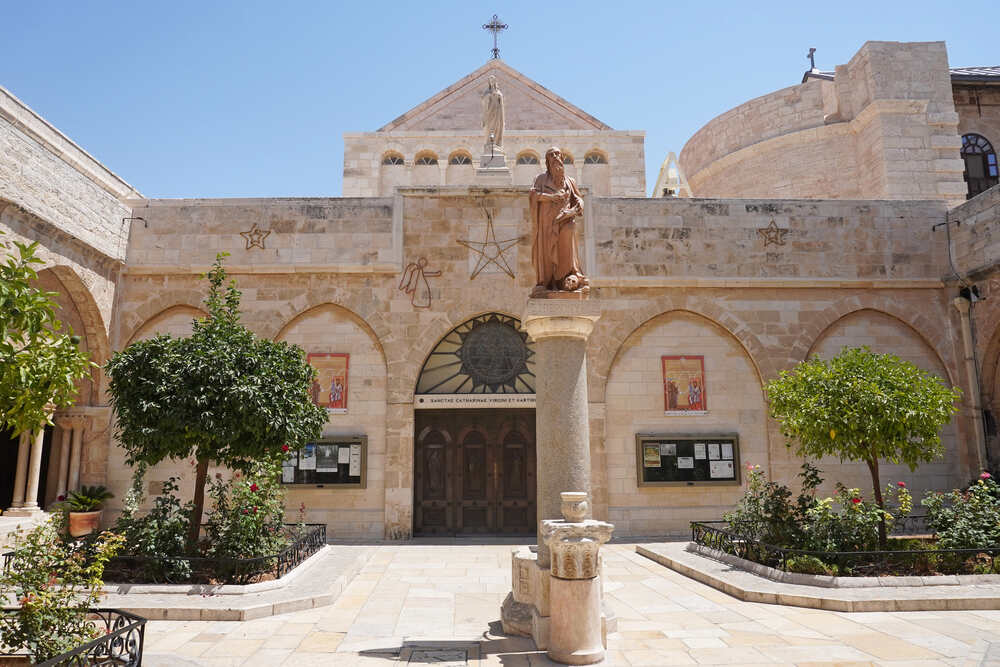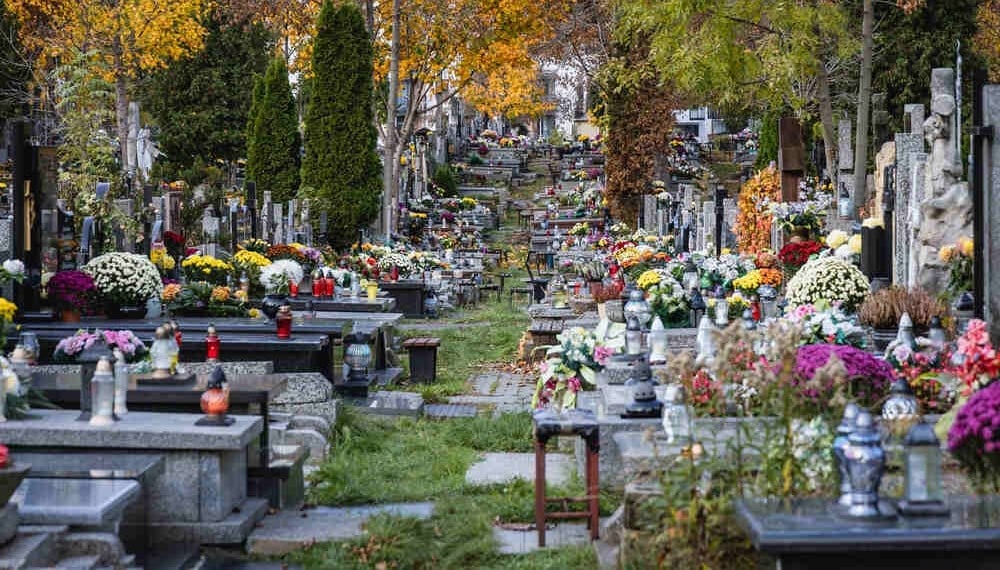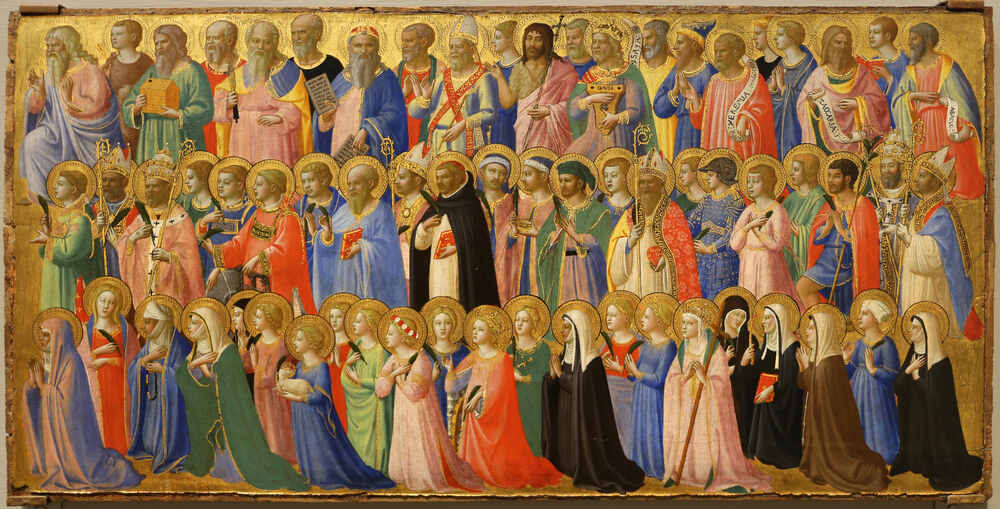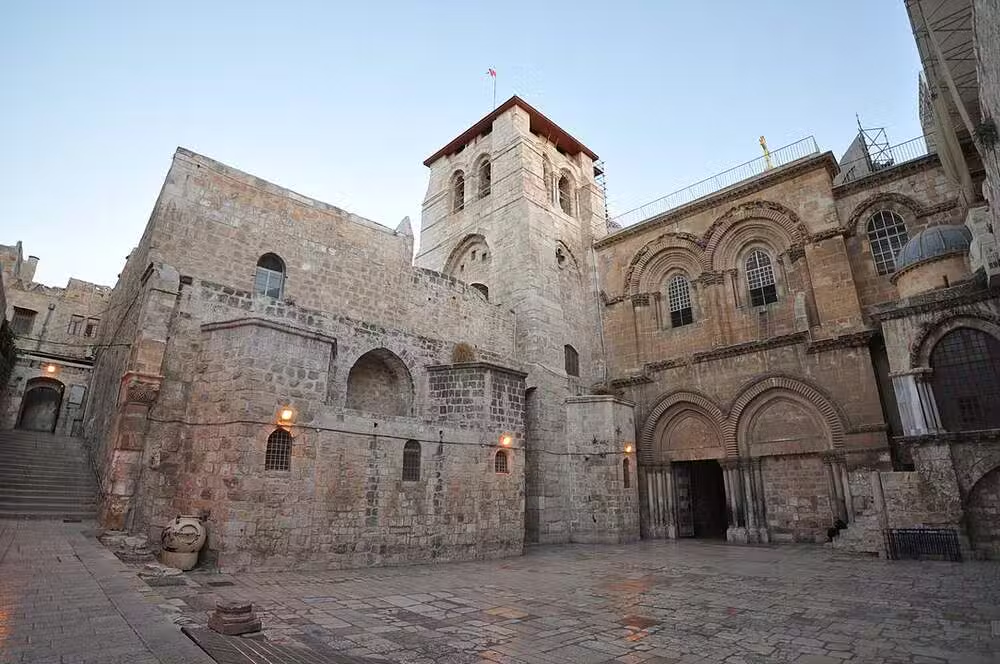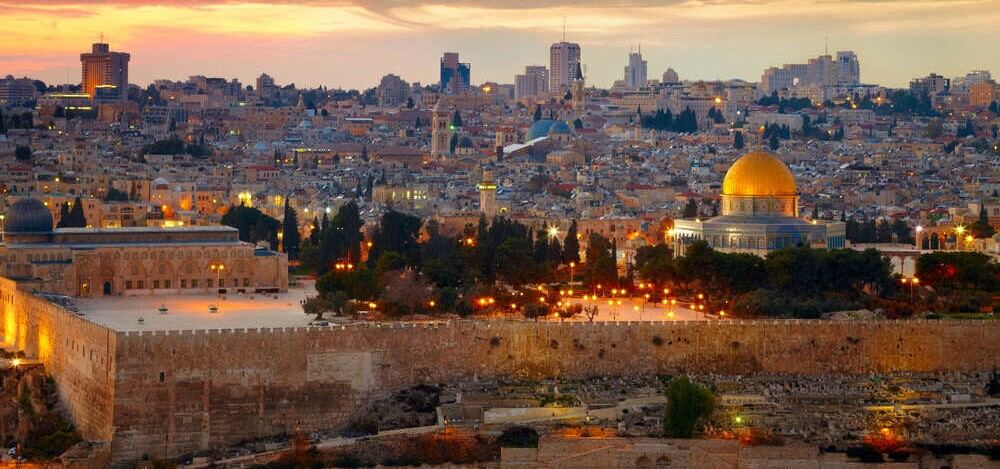You can use the Catholic Mass Times app to find the nearest Catholic church with Mass, Confession, and Adoration schedules. It will surely help you! Download it now.
Churches with the remains of the Cross of Christ
-
The Basilica of the Holy Sepulchre, Jerusalem

Seetheholyland.net, CC BY-SA 2.0 <https://creativecommons.org/licenses/by-sa/2.0>, via Wikimedia Commons
As Catholic.net states, the Chapel of Saint Helena is a 12th-century Armenian church on the lower level of the Basilica of the Holy Sepulchre in Jerusalem. In the southeast of the chapel, there is a chair that was reputed to be a seat used by Saint Helena, mother of Emperor Constantine, when she went in search of the True Cross. There are two apses in the church, one dedicated to Saint Helena and the other to Dismas, the repentant thief on the cross. The chapel is modestly adorned in memory of Saint Helena’s simplicity.
From the ambulatory, a staircase descends to the chapel dedicated to Saint Helena. The walls of the staircase are covered with crosses, incised in past centuries by Armenian pilgrims to testify to this people’s devotion to the Cross.
The three-nave chapel, with 4 columns supporting the dome, is owned by the Armenians and dates from the 12th century. Sources and archaeological excavations confirm that the hall was already used in some way in Constantine’s project. Many lamps hang from the walls in the Armenian style.
From the Armenian Chapel of St. Helena, access is gained to the lower part of the “Inventio Crucis” (Finding of the Cross of Christ), where every year, on May 7, the memory of the discovery of the Holy Cross is celebrated and where the Franciscan Father Custos carries in procession the wooden relic of the Cross of Christ to the place where it was traditionally found.
- For more information on this chapel, visit the website of the Franciscan Custodians of the Holy Sepulcher.
- Location: Jerusalem
-
The Basilica of the Holy Cross in Jerusalem, Rome, Italy

Livioandronico2013, CC BY-SA 4.0 <https://creativecommons.org/licenses/by-sa/4.0>, via Wikimedia Commons
The Basilica of the Holy Cross in Jerusalem is one of the seven pilgrimage churches in Rome. During Emperor Augustus’s reign, the area now occupied by the basilica was located on the outskirts of the city and had an imperial residential character.
After Constantine moved the capital to Constantinople, this area came under the ownership of his mother, Saint Helena, who decided to convert part of the residence into a chapel intended to preserve the relics of the Cross of Christ, which she herself discovered on Mount Calvary during her pilgrimage to the Holy Land in the year 325. Later, the current basilica was built around this chapel.
Relics that are preserved today in this Basilica include:
1. Wood of the True Cross of Christ: Three small pieces of wood.
2. Titulus Crucis: The tablet that Pontius Pilate ordered to be placed on the Cross of Christ, with the inscription “Jesus Nazarene King of the Jews” (INRI).
3. Thorns from the Crown of Thorns: Two thorns from the Crown of Thorns that Christ wore during his passion.
4. Nail: The third nail of the crucifixion, which held Christ on the Cross.
- For more information on this chapel, visit the website of the Basilica of the Holy Cross in Jerusalem.
- Location: Piazza di S. Croce in Gerusalemme, 10, 00185 Roma RM, Italy
-
The Monastery of Santo Toribio de Liébana, Cantabria, Spain

Guillén Pérez, via Flickr, <https://www.flickr.com/photos/mossaiq/
The baldachin of the Monastery of Santo Toribio de Liébana in the center of the chapel honors the Lignum Crucis, a piece of the Cross of Christ, on which he gave his life for each one of us.
The relic arrived at the Monastery in the 8th century, along with the remains of Saint Toribio, to protect it from the Arab advance in the peninsula. It came from Astorga, where it had been taken from Rome in the 6th century by Saint Toribio, who was the first bishop of that city.
According to Father Sandoval, chronicler of the Benedictine order, this relic corresponds to the “left arm of the Holy Cross, which Queen Saint Helena, mother of Emperor Constantine in the 4th century, left in Jerusalem after discovering the crosses of Christ and the thieves. The fragment is sawn and arranged in the form of a cross, preserving intact the sacred hole where Christ’s hand was nailed “.
In 1958, scientific studies confirmed that the wood of the relic belongs to a cypress of the species Cupressus sempervirens L., native to Palestine, and that it is more than 2,000 years old.
- For more information about this chapel, visit the website of the Monastery of Santo Toribio de Liébana.
- Location: Monastery of Santo Toribio de Liébana, 39570 Camaleño, Cantabria, Spain
-
The Basilica Shrine of the Vera Cruz in Caravaca, Murcia, Spain

Aleginonso, CC BY-SA 3.0 <https://creativecommons.org/licenses/by-sa/3.0>, via Wikimedia Commons
The Royal Basilica Sanctuary of the True Cross of Caravaca is a majestic Baroque-style temple whose construction began in 1607 on top of an old chapel that housed a fragment of the Lignum Crucis, part of the true cross on which Christ was crucified. The construction of the basilica extended for almost a century, culminating in 1703.
This sanctuary is known for guarding the Cross of Caravaca, a cross of Eastern origin which, according to tradition, was brought from Jerusalem. The legend tells that during a Mass officiated by Father Chirinos before a Muslim ruler, the cross appeared miraculously, leading the ruler to convert to Christianity.
- For more information about this chapel, visit the website of the Basilica Shrine of the Vera Cruz.
- Location: C. Cta. Castillo, 9, 30400 Caravaca de la Cruz, Murcia, Spain
We are faced with the mystery of the cross, which represents strength and certainty for us, while in Jesus crucified it manifests as ugliness, fragility, poverty, and dishonor… It is a defenseless love, from which many turn away their gaze, but which contains the power of love that humbles itself and bears the sin of those who attack it.
The Cross of Christ remains a symbol of faith and hope for millions of believers worldwide. If you wish to deepen your understanding of its meaning and find a place to pray,
You can use the Mass Times app to find the nearest Catholic church with schedules for Mass, Confession, and Adoration. It will surely help you! Download it now.
Where are the remains of the Cross of Christ located?
Fragments of the Cross of Christ are distributed in various places around the world. Among the most relevant sites are the Basilica of the Holy Sepulchre in Jerusalem, where it was originally found; the Basilica of the Holy Cross in Jerusalem, in Rome, which keeps relics brought by Saint Helena; the Monastery of Santo Toribio de Liébana, in Spain, with the largest known fragment; and the Royal Basilica Sanctuary of the True Cross of Caravaca, in Murcia.
How was the Cross of Christ discovered?
The Empress Saint Helena, mother of Constantine, undertook a pilgrimage to the Holy Land in the 4th century. Excavations on Mount Calvary revealed three crosses. To identify the true one, it was tested on a sick woman, who was healed upon touching one of them. This discovery led to the construction of the Basilica of the Holy Sepulchre and marked the beginning of the veneration of the Cross.
How was the authenticity of the Cross of Christ verified?
Historically, the authenticity of the Cross was established through miraculous signs, such as the account of the healing of the sick woman. In recent times, scientific studies have analyzed fragments, confirming that the wood comes from the Palestine region and is over 2,000 years old. However, faith in the Cross does not depend on material evidence, but on its significance in the history of salvation.
Why is the Cross of Christ such a powerful symbol in the Catholic faith?
The Cross is central to Christianity because on it Jesus gave his life for the redemption of the world. It represents love, sacrifice, and victory over sin. For believers, it is not just an instrument of torture, but the symbol of Christ’s triumph over death, reminding us that through suffering, eternal glory is achieved.
What miracles are attributed to the Cross of Christ?
Throughout history, numerous miracles have been recorded related to the Cross. From the miraculous discovery by Saint Helena to healings attributed to relics of the True Cross. It is also said that the Cross of Caravaca appeared inexplicably during a Mass in the 13th century, leading to the conversion of a Muslim ruler. The Cross continues to be a sign of faith and a source of grace for those who venerate it.




